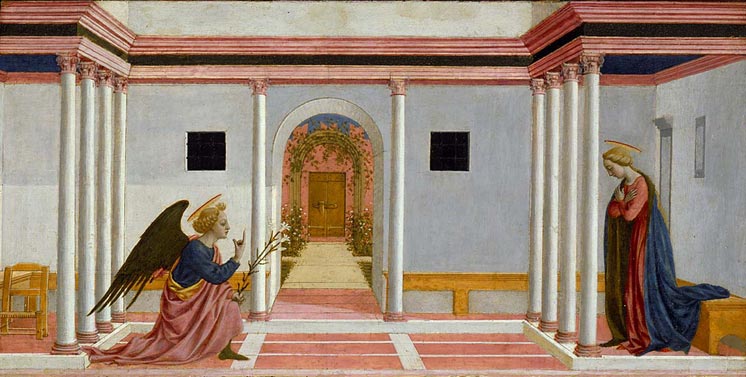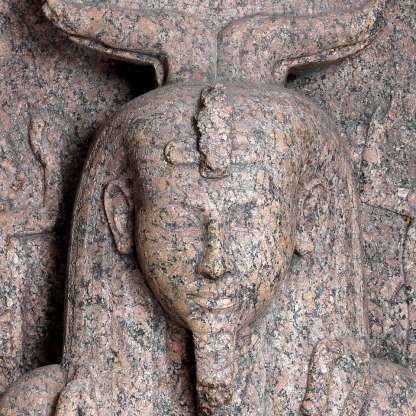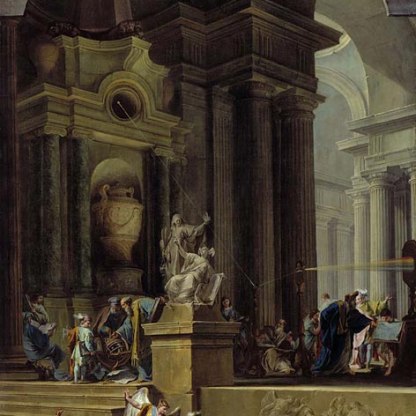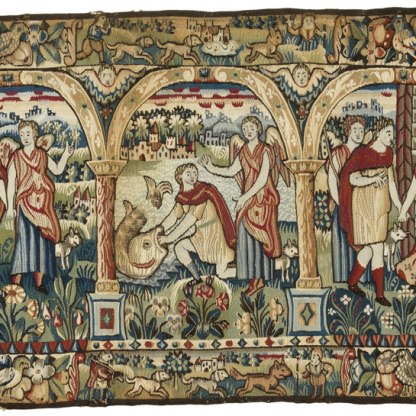The Annunciation
The Annunciation is one of the most popular subjects in Christian art. It was painted in the catacombs at Rome as early as the fourth century.
The lilies that are often found in Annunciation scenes usually refer to Mary's virginity and spiritual purity. St Bernard of Clairvaux, however, interpeted the lily as a symbol of Christ himself, and this may explain Gabriel's offering the flower to Mary in Domenico Veneziano's panel. The lily was also the symbol of the city of Florence, which in the fifteenth century, along with most parts of Europe, celebrated the new year on 25 March, the feast day of the Annunciation.
Mary's virginity is symbolised in a number of other ways. Through the arch on Veneziano's panel we see a garden enclosed by a wall, with a locked gate at the very centre. The enclosed garden – usually referred to by the Latin hortus conclusus – was a common motif in medieval art and is derived from verses in the Song of Solomon, 4, 12: 'a garden locked is my sister, my bride, a garden locked, a fountain sealed'.
The locked door – porta clausa – likewise refers to Mary's purity. This image is inspired by the book of Ezekiel, 44, 2:
Then the Lord said into me; this gate shall remain shut; it shall not be opened, and no one shall enter by it; for the Lord, the God of Israel, has entered by it, therefore it shall remain shut.
Sometimes in Annunciation scenes, the Holy Spirit is seen in the form of a dove, as in the miniature from a c. 1520 Flemish Book of Hours [MS.294b]. In another manuscript illumination, from a fifteenth-century French Book of Hours [MS.62.f.29r], the dove floats down on the golden breath of God the Father, who is seen surrounded by seraphim on the upper left of the page.
In Veneziano's panel, the divine presence is implicit in the light that suffuses the whole painting, in the perfect symmetry of the scene, and the in subtle, carefully chosen detail.
Other highlight objects you might like
Other pathways and stories you might like
Sign up to our emails
Be the first to hear about our news, exhibitions, events and more…






